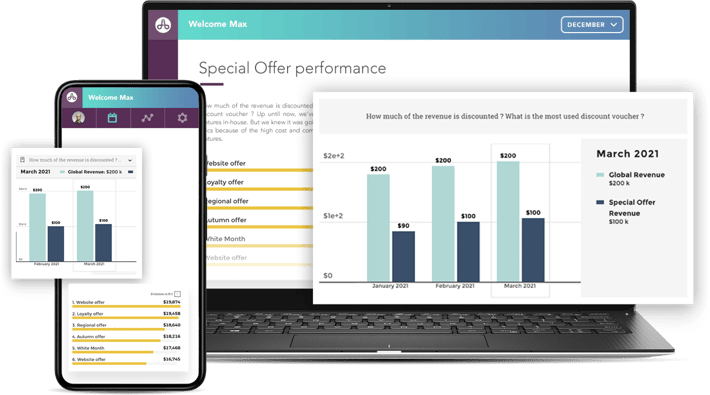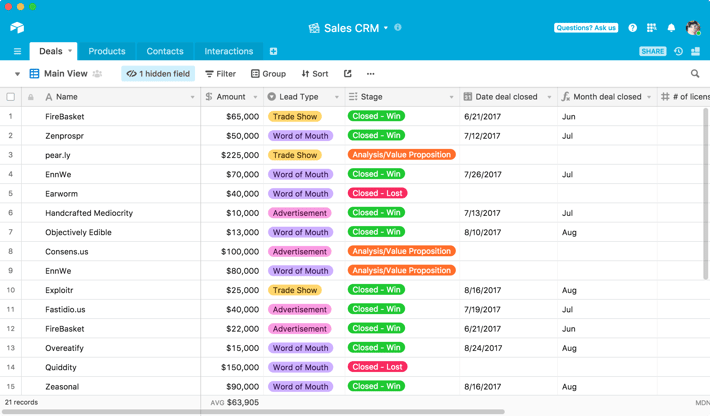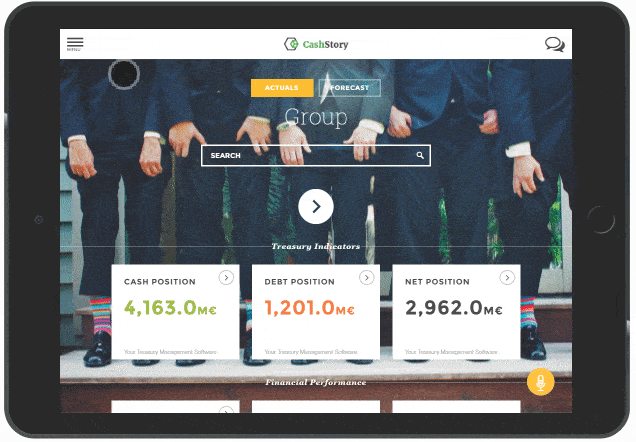With an increasing quantity of data, corporations are entering an era of fact-based innovation, which is backed up by solid evidence to prove the validity of new ideas. For the past decade, firms have accumulated data, invested in technology, and paid handsomely for analytical talent in hopes of better satisfying customers, streamlining operations, and clarifying strategy. Yet, for many organizations, the development of a data-driven culture is elusive, and data are rarely the basis for all decisions.
Data culture refers to an environment in which everyone in your organization is capable of using data easily to make good decisions - so much so that using data becomes a natural part of their day-to-day activities. As a result of the widespread use of data, there will be a large impact that will only compound in the future.
However, trying to be such a data-driven company can sometimes feel tiring, where you never seem to catch up to what you should be doing. You may have thought about hiring a data scientist on your team, or even opening up a new position for a data analyst.
The truth is, you don’t need anything fancy. To establish a thriving data culture, all you need are the right tools, a make-it-work attitude and these basic guidelines already in place.
- Have a clear vision of the type of data culture you want to
- Be ready to enable data accessibility
- Make sure all teams in the organization are ready to collaborate
- Regularly maintain, clean and update your data
- Use your analytics to help employees and not just customers
Having executed these guidelines you will be ready to implement these three strategies for establishing a data culture at your business without relying on a data team.
Strategy 1: In-App Dashboards
As a first step, you can rely on the reporting tools of your existing applications to establish a data culture. Reporting is integrated into a number of modern applications (sometimes using embedded analytics from platforms like Toucan). This is done due to increased adoption rates and quick deployment leading teams to make data-driven decisions more effectively.
The in-app reporting solutions can be custom tailored to fit all your teams giving each of them the insights they need. They usually provide search, sorting, and filtering to get the data you need but to get granular, you need to be very familiar with the application itself unless it is Toucan. This is due to the fact that toucan was made for end users and thus comes with context at every turn ensuring that users can analyze the data and insights as much as they need to. In this way, even non-technical users become familiar with the analytics by using them day in and day out.

This requirement for specialized knowledge can cause data culture fragmentation with this option, but this can be avoided with a guided solution like Toucan. For instance, the product team doesn’t have much use for marketing analytics in their day-to-day. If there is something the product team needs to know about website traffic (e.g., traffic to a new feature’s landing page), it’s up to the marketing team to bridge that gap. With most analytics solutions this would lead to fragmentation in data accessibility. But Toucan provides a glossary and tips to ensure that the product team can land on the marketing dashboard and gain the insights they need.
Without a way to consistently communicate their data culture to each other, each team will start to develop their own “data dialects.” This is avoided in Toucan with a comments section where everyone can interact to ask questions, discuss insights and align on analytics and data dialects.
This is a good example of data culture but it can be fragmented depending on the analytics solution you choose to implement it. Each team can make data-driven decisions, but only in a way that makes sense to them. Fortunately, by using Toucan you can mitigate this risk.
How to Implement a Data Culture with In-App Dashboards
- Invest in robust tools. Invest in applications that have access to a broad range of data and can perform a wide range of tasks with that data. For example, CRMs provide sales data, marketing data, and some customer behavior data, all of which are useful across a company in a number of different ways.
- Encourage the use of these tools among the teams they impact. You should ensure that your marketing team is thoroughly familiar with your CRM so that they can use it as effectively as the customer success team and the sales team. In this manner, you will have three teams that are all speaking the same "data dialect."
- Encourage the sharing of interpersonal data. Due to the fact that your sales, marketing, and customer behavior data are all stored in separate silos in your CRM, it is the responsibility of your sales and marketing people to inform your product managers of what is happening with the data. Promoting this exchange of information should be a priority.
Strategy 2: Cloud-Based Spreadsheets
Using a tool such as Google Sheets or Airtable, you can export and combine your data between individual applications. It is possible to develop a unified data culture without the involvement of a data team, but it can require a considerable amount of time and effort to maintain.
We are all familiar with spreadsheets. In nearly every business, spreadsheets have played an essential role for a very long time. The benefit of spreadsheets is that you can export data from different applications and combine it within a single spreadsheet. Thus, you will be able to compare data from your CRM with data from your product analytics tool, thus bridging the gap between your marketing and product teams

In recent years, spreadsheets have benefited greatly from moving online and becoming more automated. You can use Google Sheets to create a spreadsheet that is automatically saved so that it is always up-to-date, regardless of who accesses it. All you have to do is copy and paste the link. We use Airtable internally, and we love it because it combines this concept with powerful automation features and visualizations.
Cloud-based spreadsheets are highly customizable due to their shareability and automation. In addition to aggregating data, calculating fields, using pivot tables, and sharing them wherever you need them, they can do a number of things very quickly.
But this malleability comes at a cost. Keeping spreadsheets current requires a significant amount of time and effort. It does not change the fact that you have to update data, style tables for legibility, change charts, etc., manually when you move spreadsheets online and add features. Once all the data has been gathered, it is imperative that you present it in a manner that is understandable to others.
This implies that spreadsheets can still develop their own language. A data culture can be fostered by making them mutually understandable across the organization, but this is an art that requires a great deal of effort to learn.
How to Implement a Data Culture with Spreadsheets
- Consistently report and share information. Ensure that the process for entering data and sharing the results is formalized.
- Use templates as a guide. By using templates, you can ensure that your teams use spreadsheets that are as mutually understandable as possible.
- Automate whenever possible. It is possible to automate spreadsheet management using Airtable and Google Sheets. Invest the time necessary to learn and master these automations.
Strategy 3: Self-Service Business Intelligence
It's possible to establish a data culture without siloing data into different applications or managing it through endless spreadsheets when you use a self-service business intelligence platform. Despite the higher investment cost, the possibilities for what you can accomplish with your data are astronomically higher.
All your data can be gathered, understood and visualized through a business intelligence platform. It has historically been difficult to use BI platforms without the expertise of data teams. However, self-service BI platforms (such as Toucan) have made BI platforms more accessible to everyone.

Self-service BI platforms are designed to allow your employees to access the data they need - even if they are not familiar with SQL, schemas, or other technical aspects of your data. 0-code platform, intuitive dashboards filled with context, and in-dashboard collaboration, among other features, make self-service BI tools such easy-to-use that you do not necessarily require a data team to take full advantage of them.
By using a self-service BI platform, your product team can access CRM data directly without having to be aware of how to navigate that system. There will be no need for them to wade through a spreadsheet that has been created by a marketing professional. This is also true for the marketing team and the sales team. All of this can be accomplished without the involvement of a data team.
The widespread adoption of the BI platform - sometimes referred to as data democracy - lays the foundation for a data culture that is scalable. Using a BI platform allows any company to achieve what was previously possible only with a data team. If you make your first data hire, your BI platform will only become more powerful and more useful.
How to Implement a Data Culture with a BI Platform
- Evaluate the options for integration. Utilize inbuilt tools like Toucan’s one-click integration to create your own connections to all the databases you currently use. With other solutions, you might need to look into a third-party tool.
- It should be easy for a non-technical user to set it up, use it, and maintain it. For retrieving and analyzing data, BI platforms rely on SQL. Ensure that your BI platform allows you to query data without having to code SQL, as well as that it is easy to turn those queries into interactive dashboards.
- At first, only purchase the number of seats you absolutely require. By restricting the number of individuals using your BI platform initially, you will be able to save some money and work out any kinks that may arise. When you are ready, you should grant access to everyone.
Importance of a Data Culture without needing a Data team
Data is already being used by most companies to gain insight into their operations. However, a data-driven culture does not imply blindly following the numbers. Companies should develop skills in data interpretation and critical thinking so that they are not only able to make decisions based on reliable data, but also to recognize when those decisions should not be based on that data. This can be best done by using an analytics platform that provides actionable insights and context to data.
The following are some reasons why every organization must have a strong data culture:
- Collaborating with different teams to achieve a common goal
It is also essential that different teams within the organization work together to develop a strong data culture. Self-service analytics can provide actionable insights to everyone within the organization. Through the use of data analytics, other members of the organization can gain insight into their daily work, and their ideas can be shared throughout the organization.
- Encouraging the democratization of data
The next point follows directly from this. Having a strong data culture helps to eliminate gatekeepers who create a bottleneck at the gateway to the data. In most organizations, the IT department acts as the 'owner' of the data, while users of the data must go through the department. A strong data culture facilitates the democratization of data to more business users for decision-making.
- New product opportunities
In order to build a successful product, it is essential to use data intelligently, rather than developing a product without knowing what customers want. Furthermore, existing product features can be evaluated and customized to meet customers' needs. A strong data culture, therefore, provides product development teams with an insight into both the future and the past.





.webp)